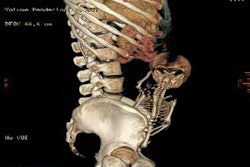Dear AuntMinnie Insider,
The choice between primary 2D and primary 3D reading in virtual colonoscopy is turning out to be just that -- a choice. And no matter which method you choose for primary reading, as Dr. Judy Yee from the University of California, San Francisco noted in a recent talk, you'll need the other method to confirm your findings.
Certainly there are differences. Studies generally show that 2D exams can be read faster, while 3D often yields more accurate polyp measurements, for example. Individual lesions are often easier to spot in one or the other. You'll find reading tips from Dr. Yee, and some recent study results on 2D versus 3D, in this issue's Insider Exclusive.
A recent study in Radiology, for example, logged faster reading times and slightly higher sensitivity with 2D, while another study found better measurements with 3D.
If you're using fluid tagging to hunt for submerged polyps, you'll want to be sure you're using the right window settings, according to a study from London.
In the money department, another U.K. paper examines the costs and benefits associated with extracolonic findings detected at VC. Unlike some previous studies, this one calculates treatment costs in a cohort of older, symptomatic patients, including several over 70 who required surgery to address the findings. Was it worth the price?
Finally, a new report by gastroenterologists updates optical colonoscopy surveillance guidelines postsurgery. Look for these stories and more, in your Virtual Colonoscopy Digital Community.




















